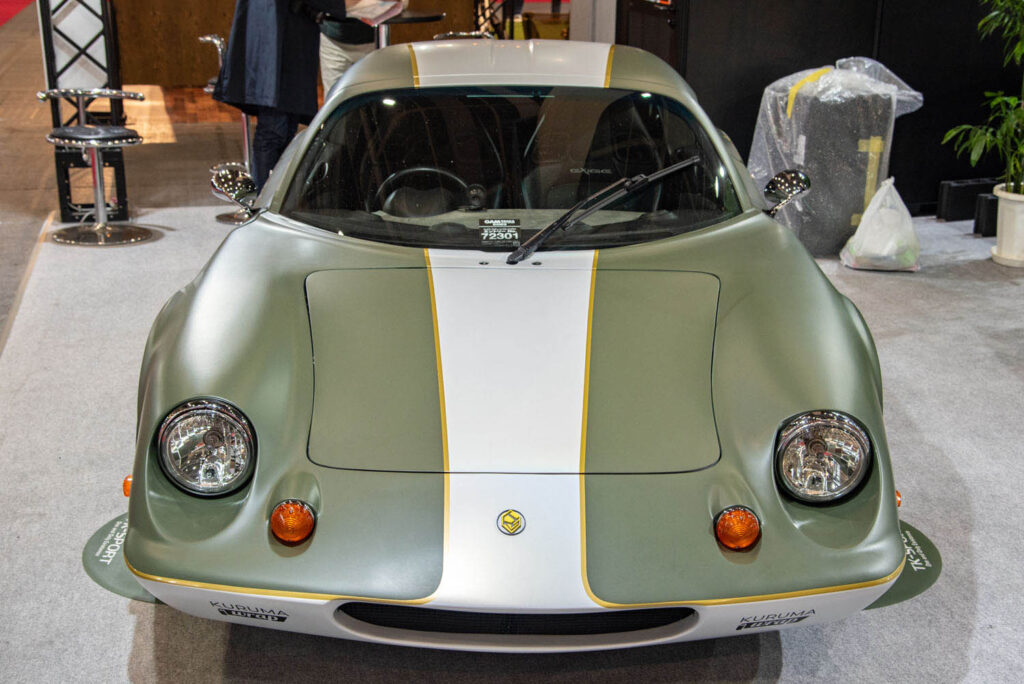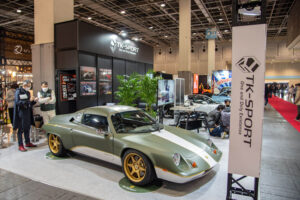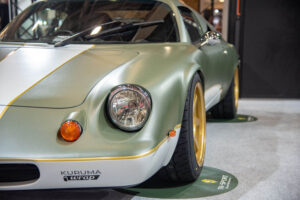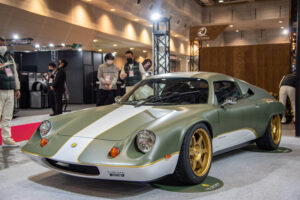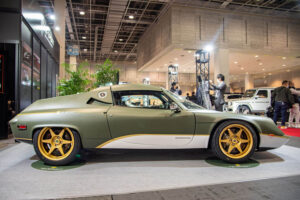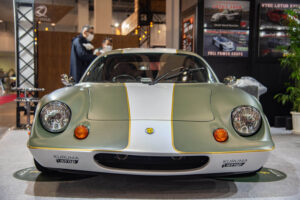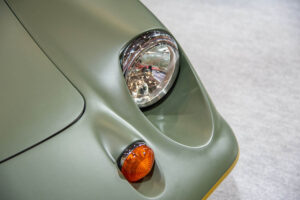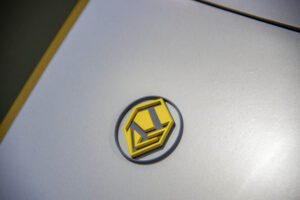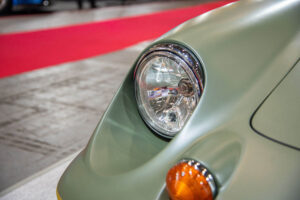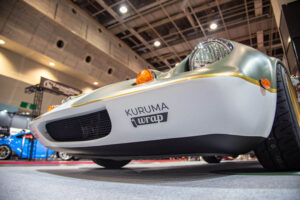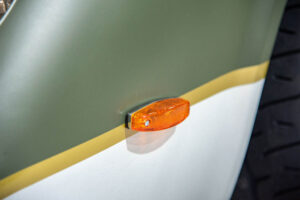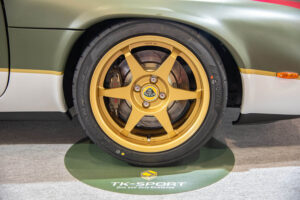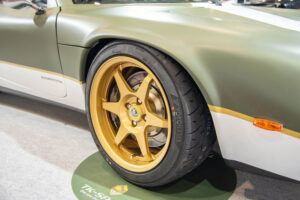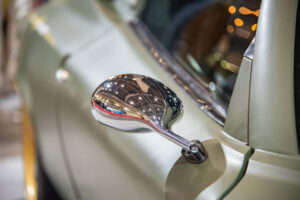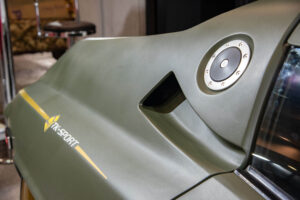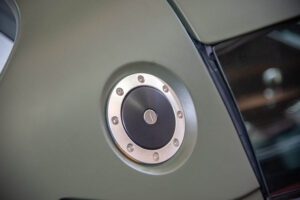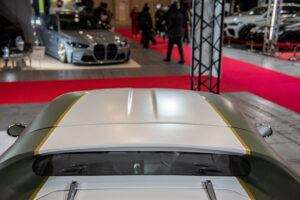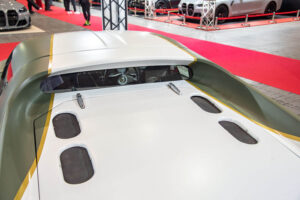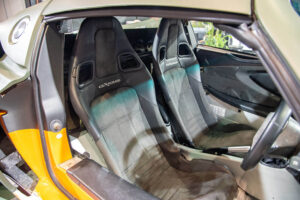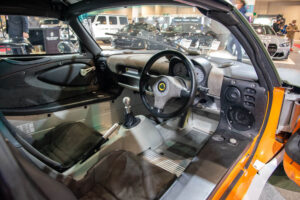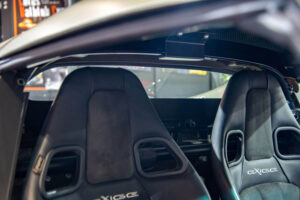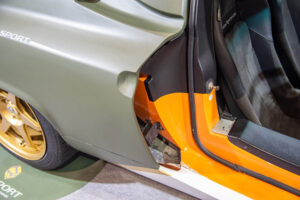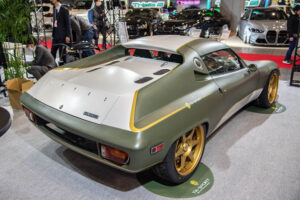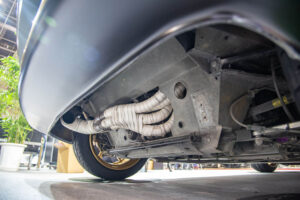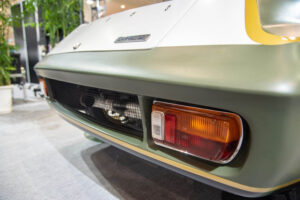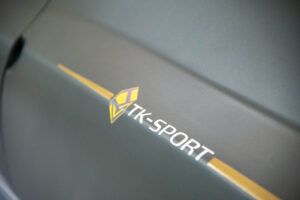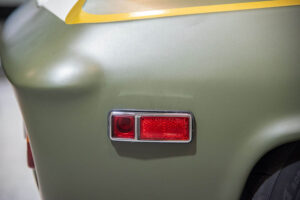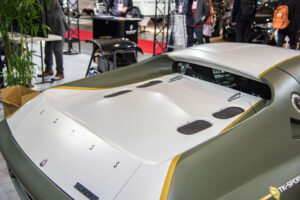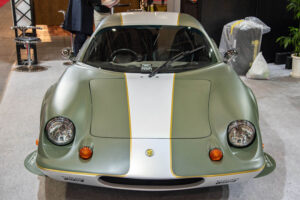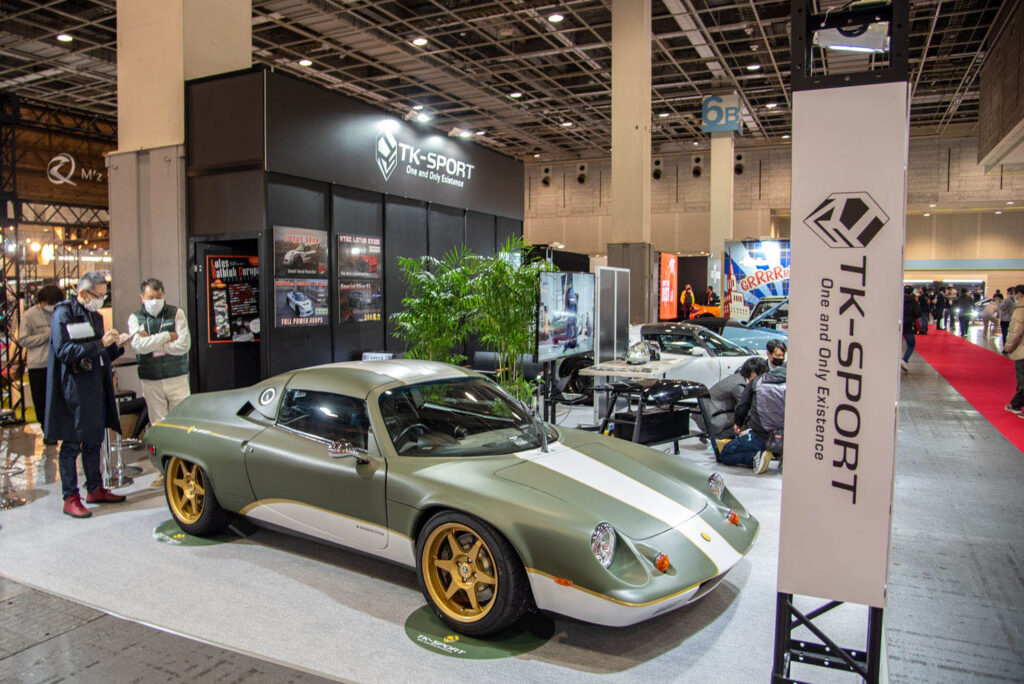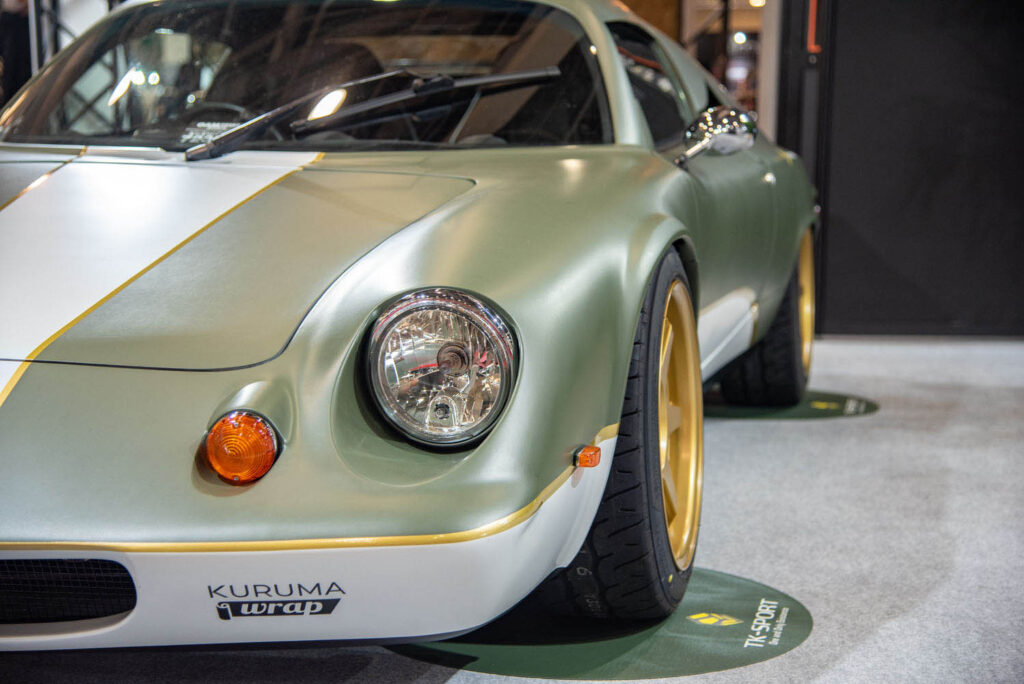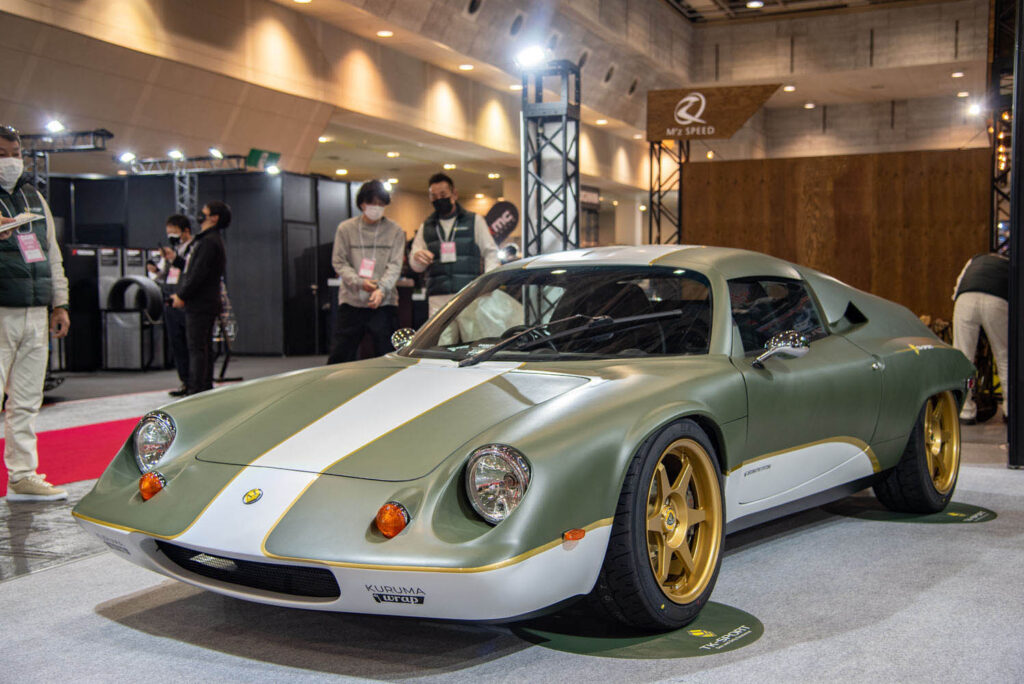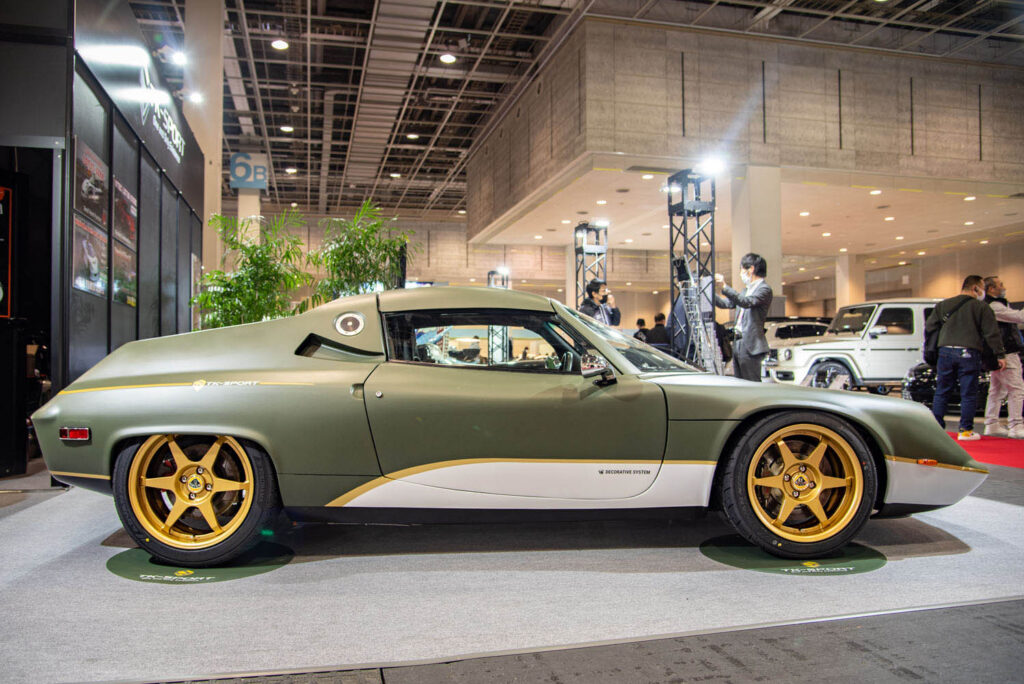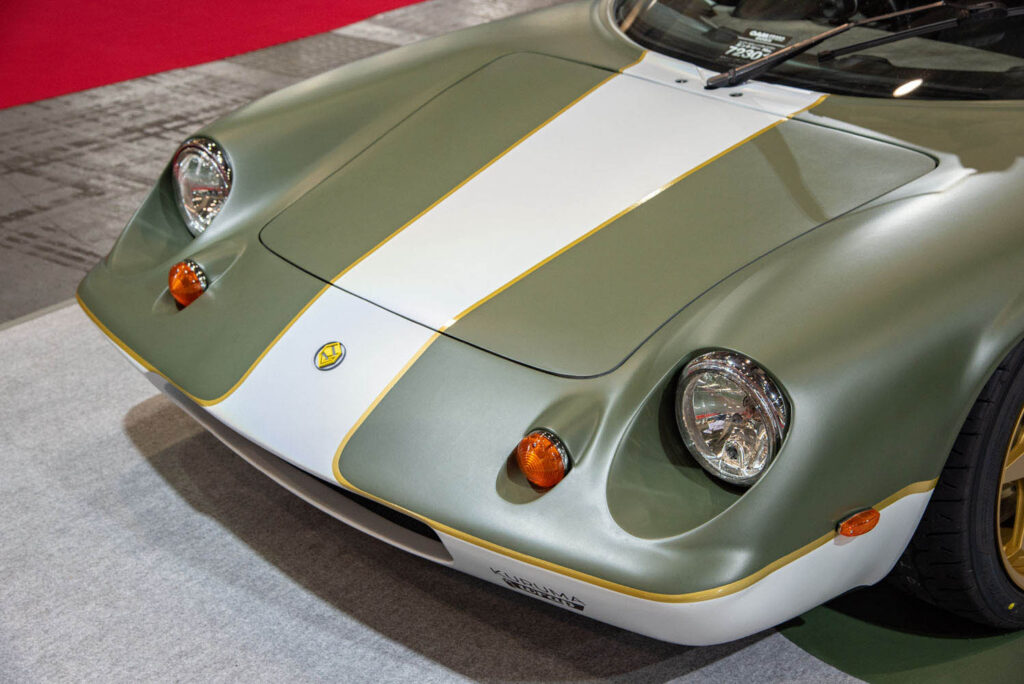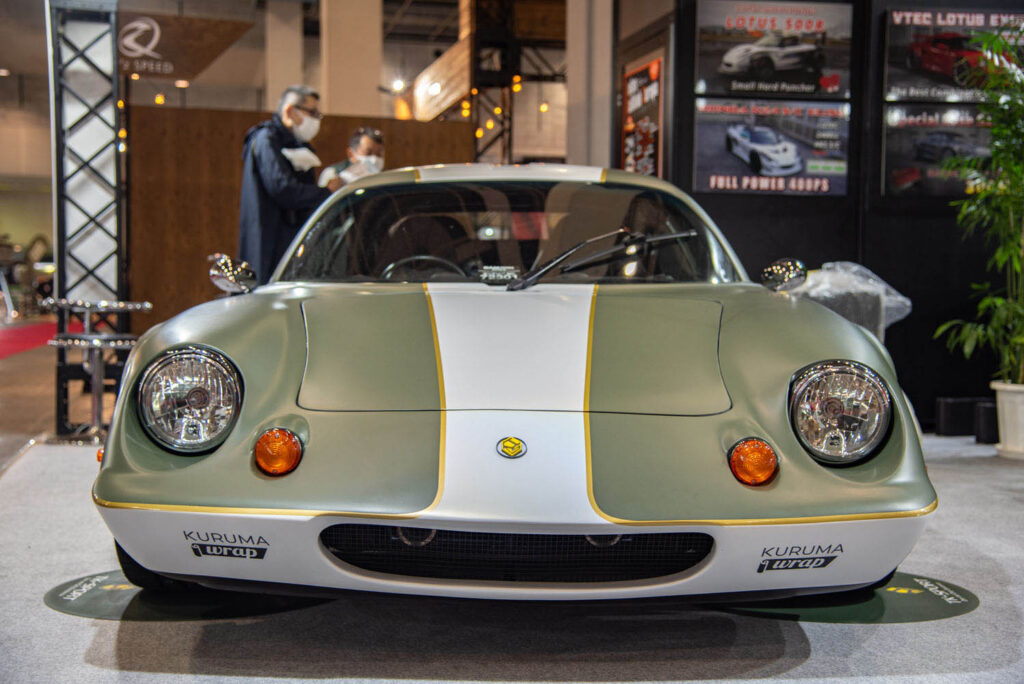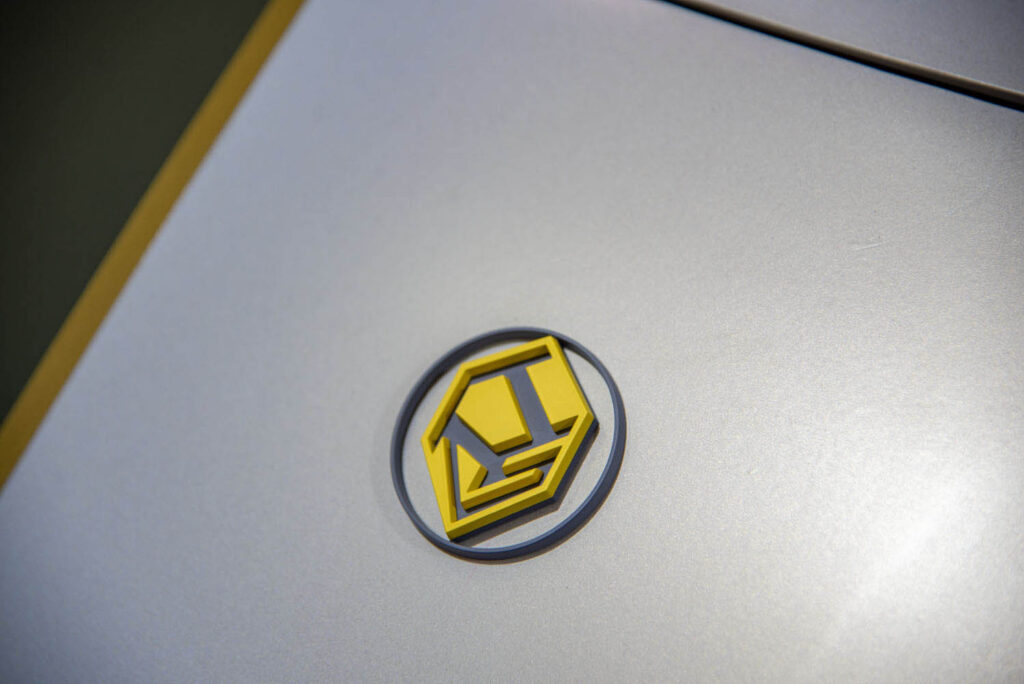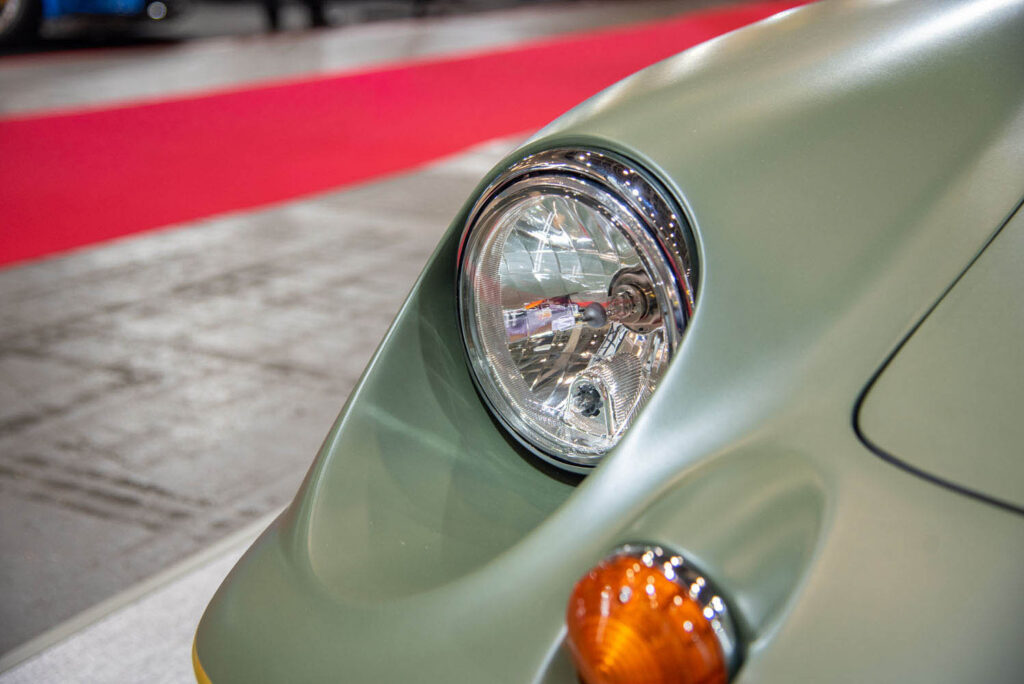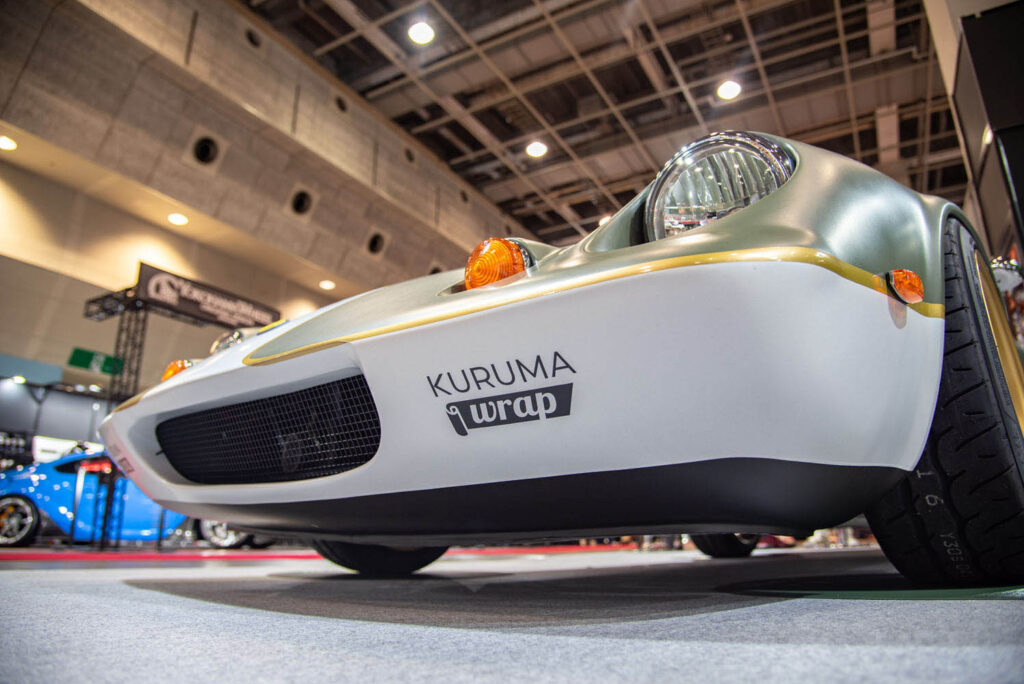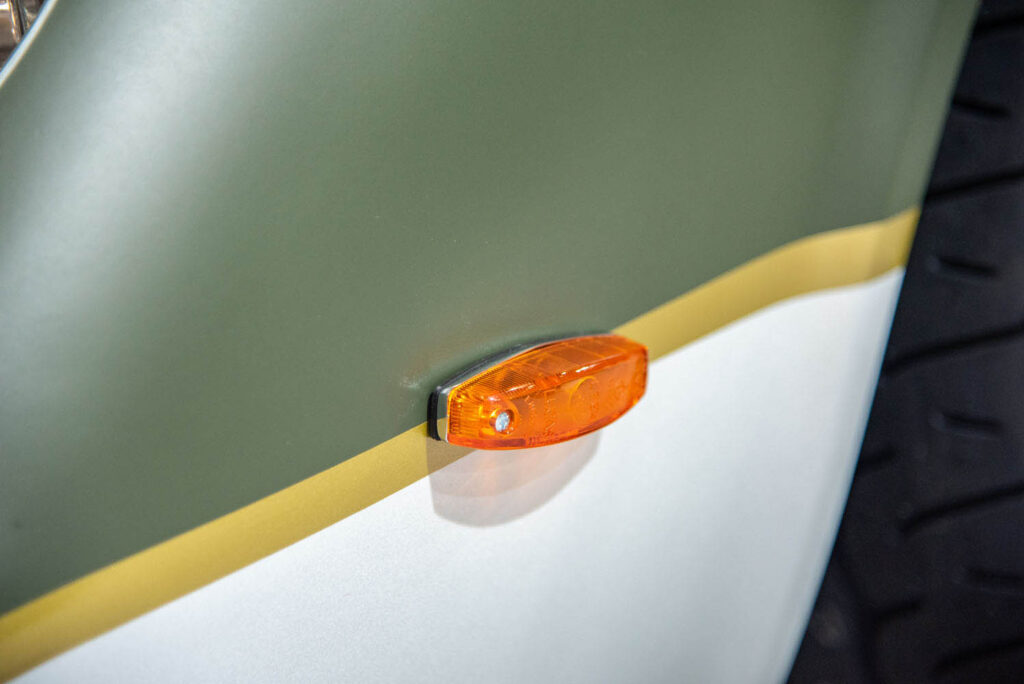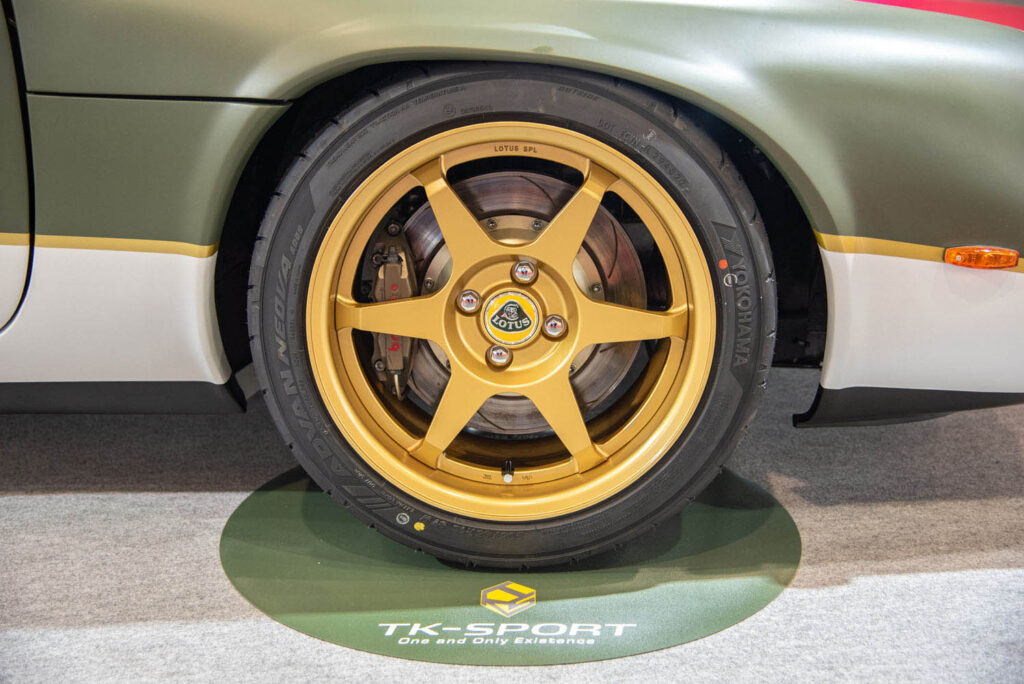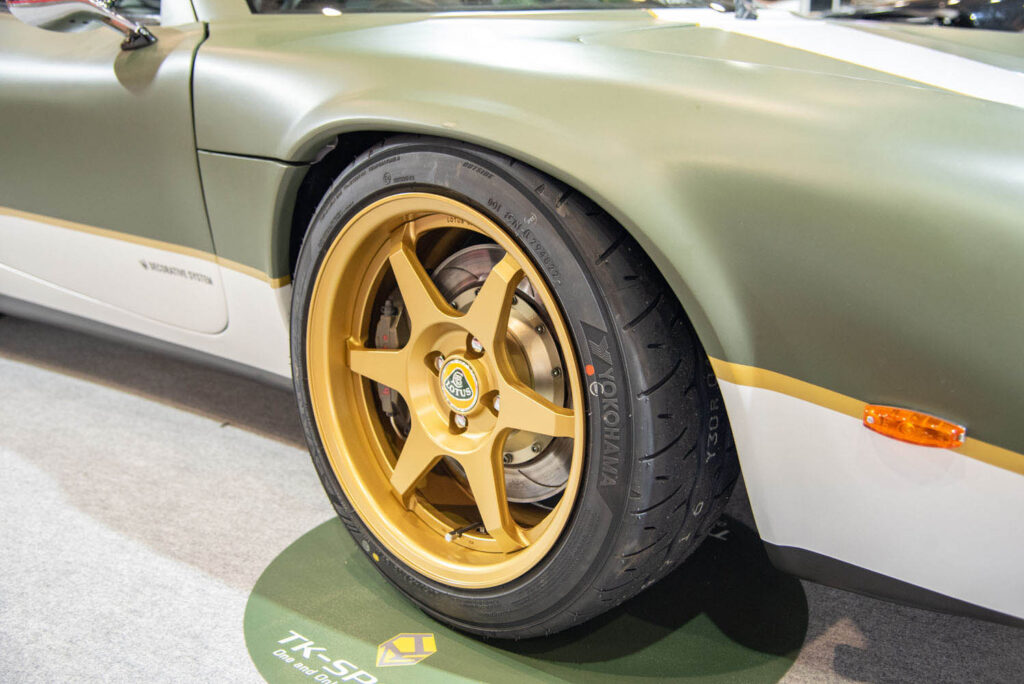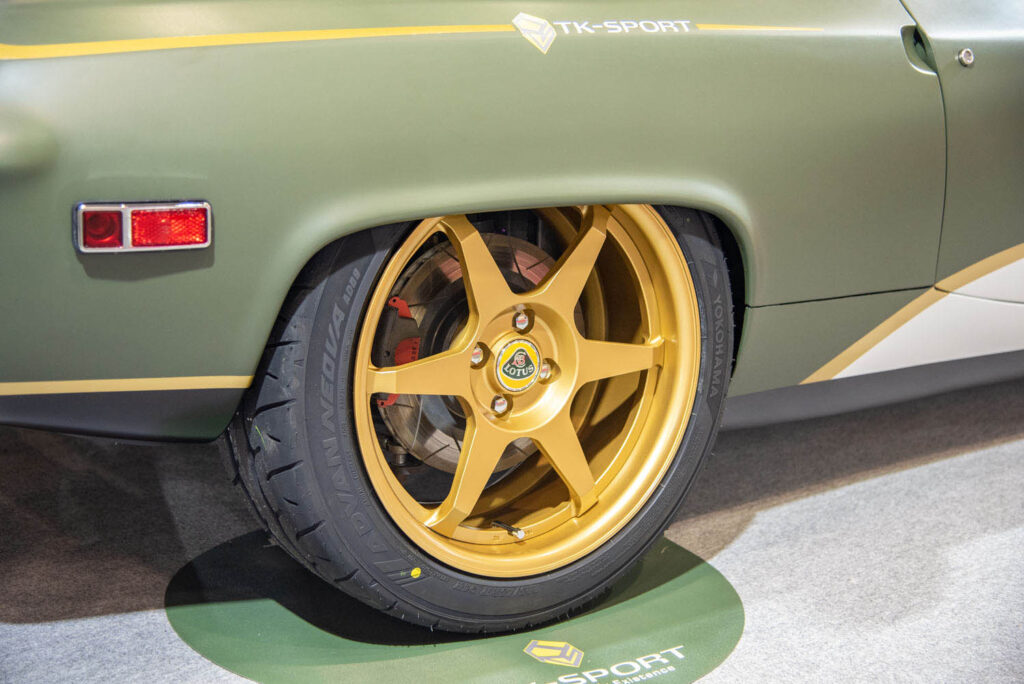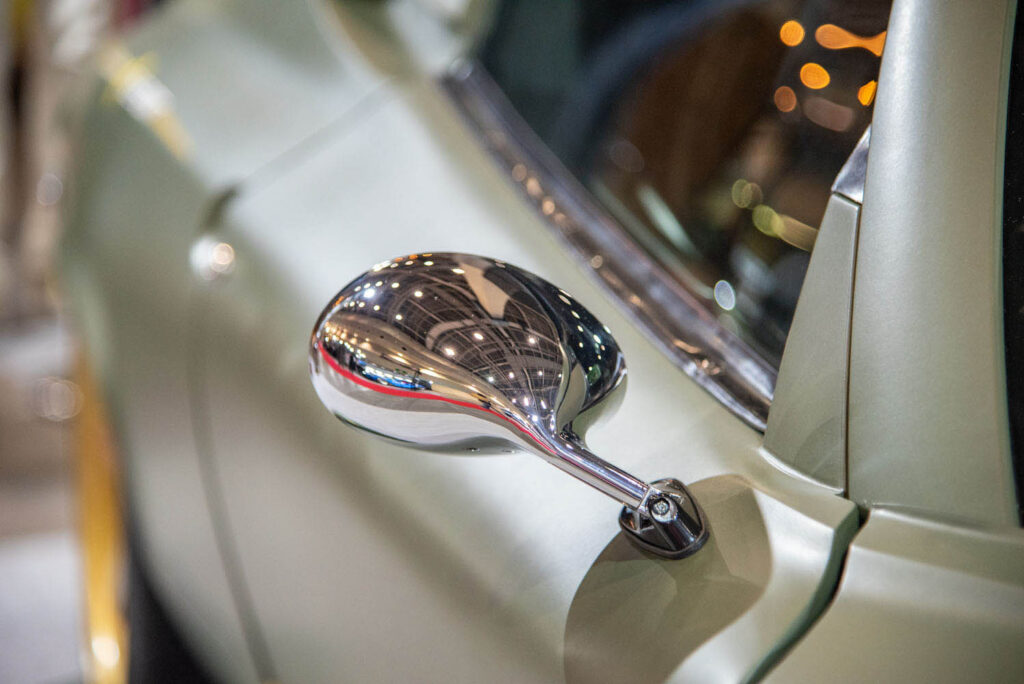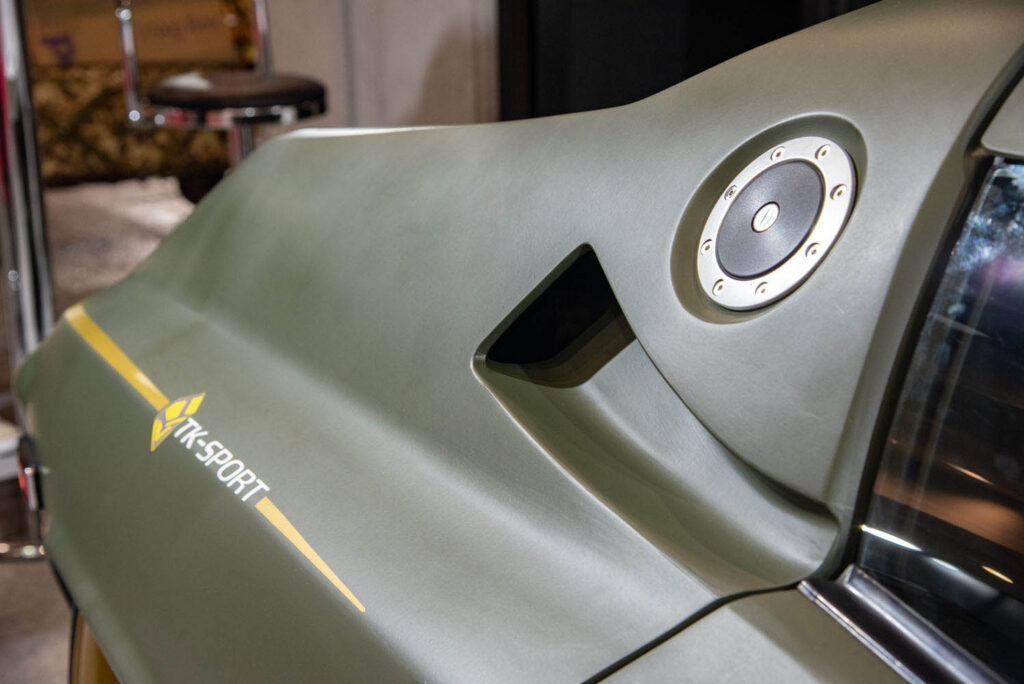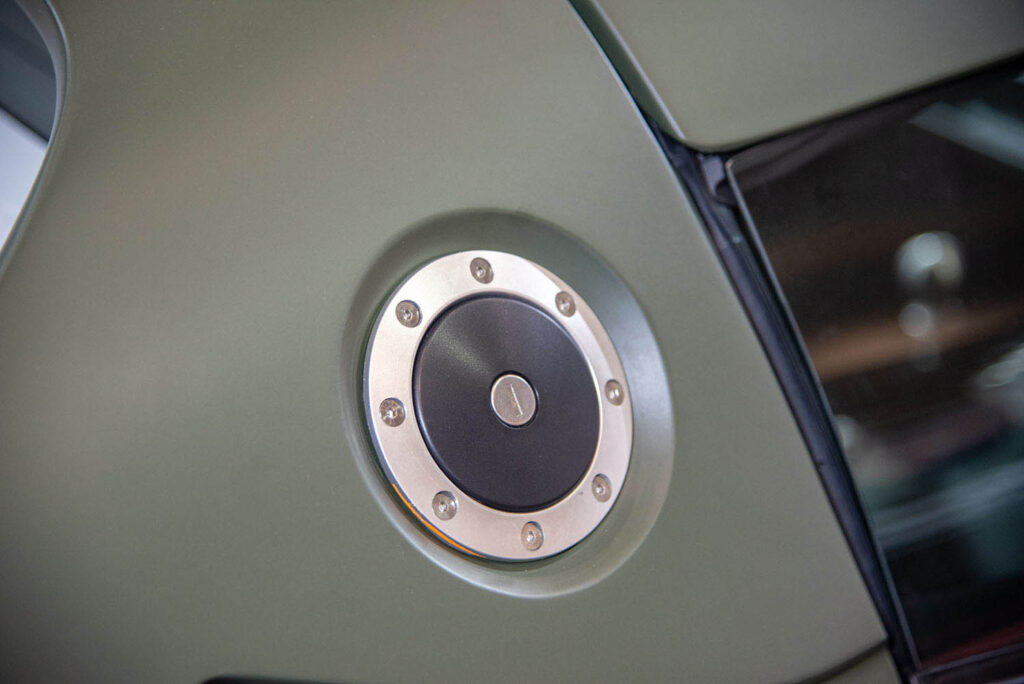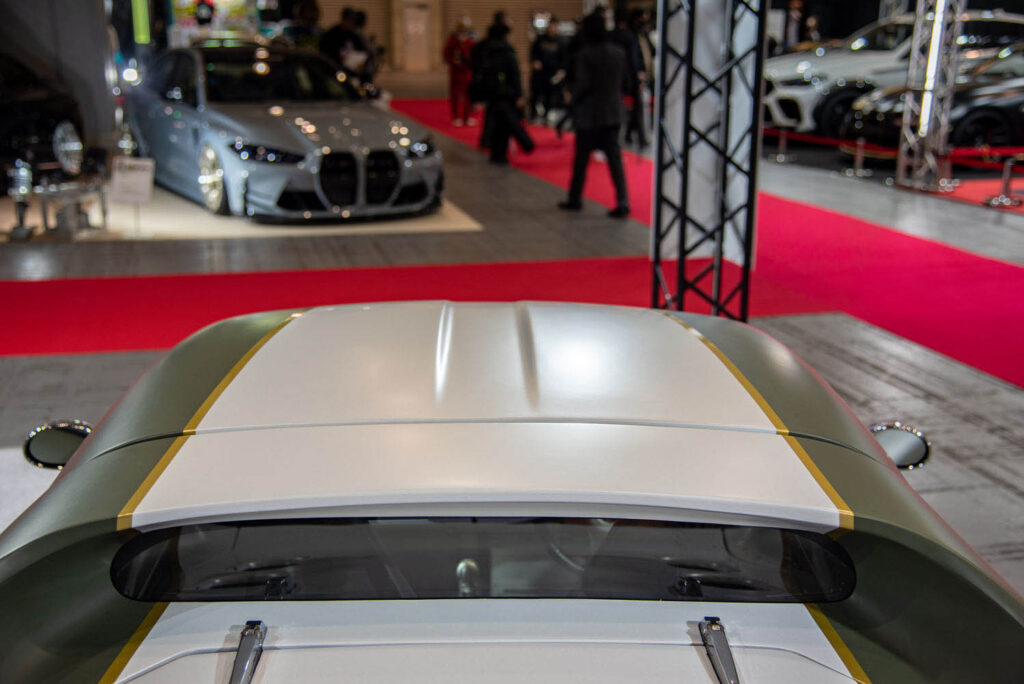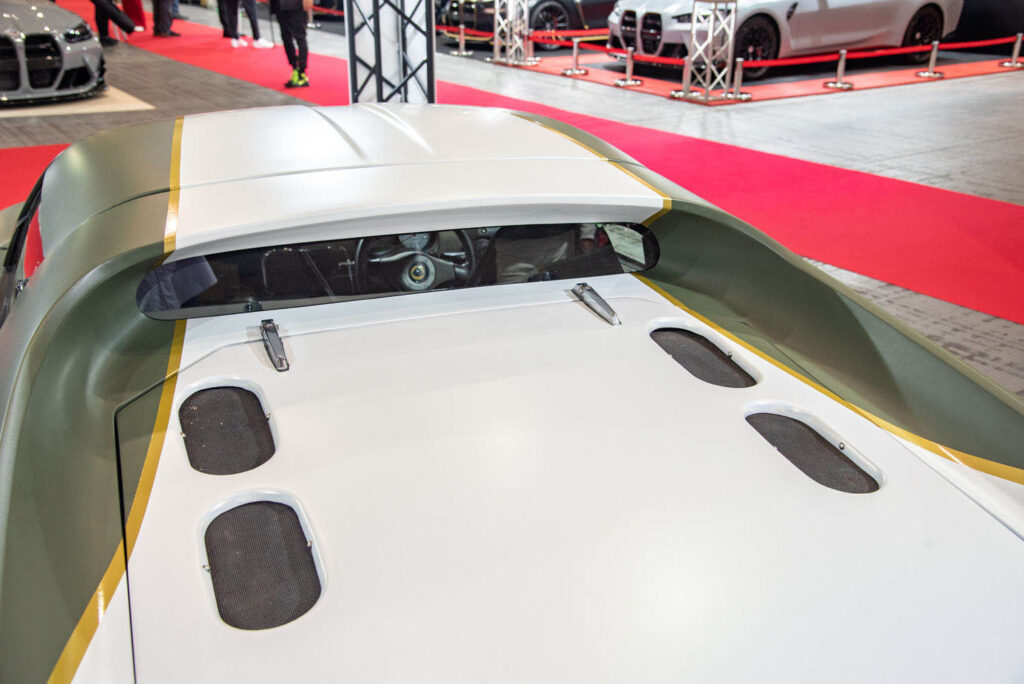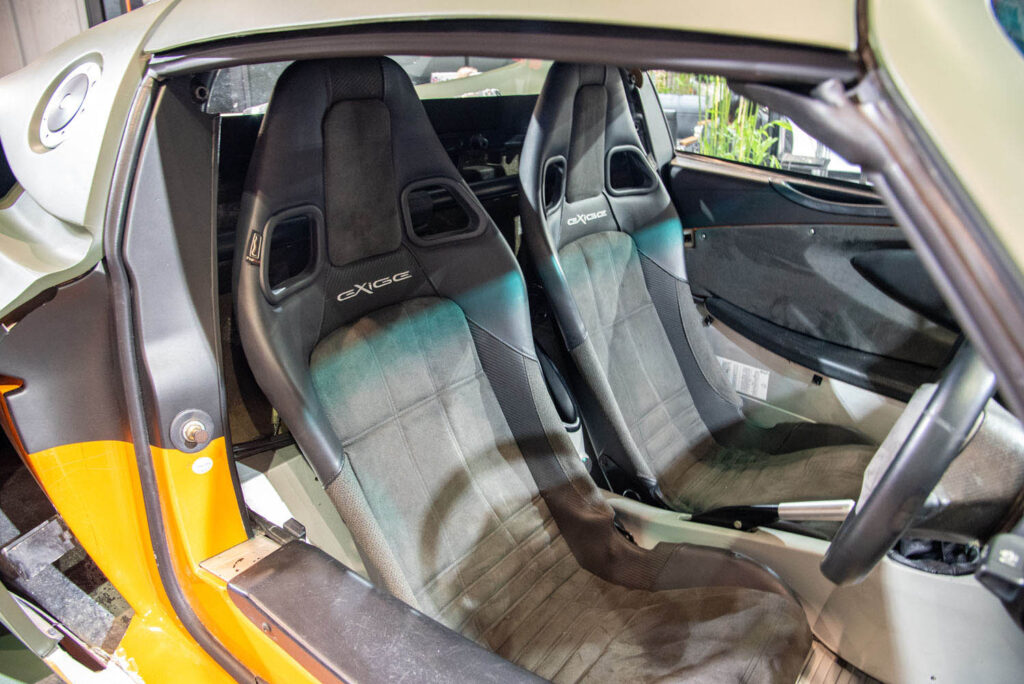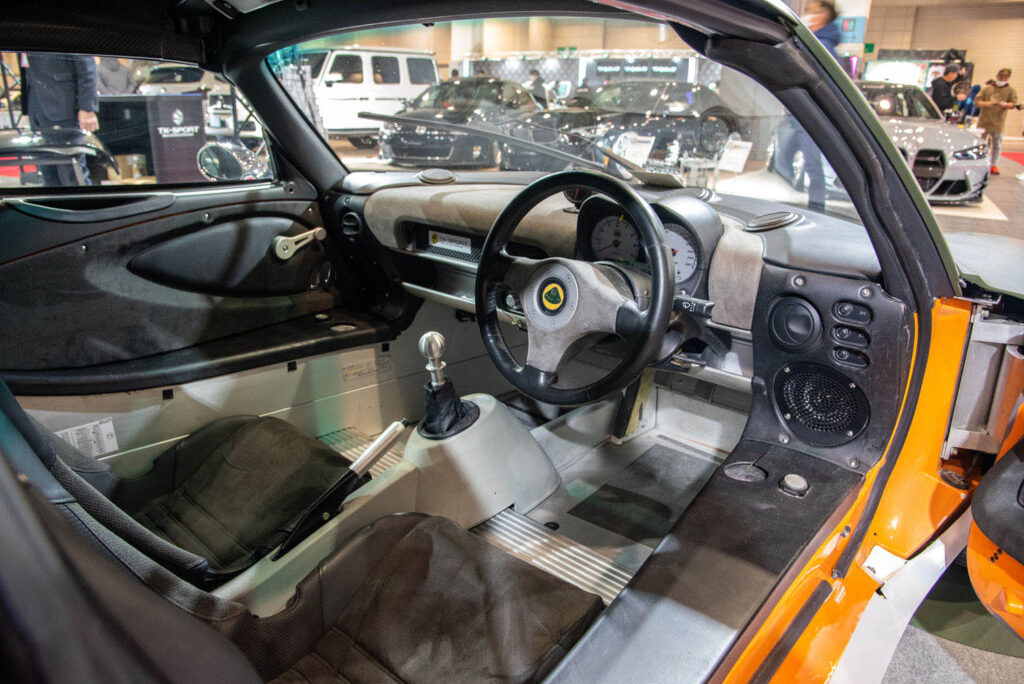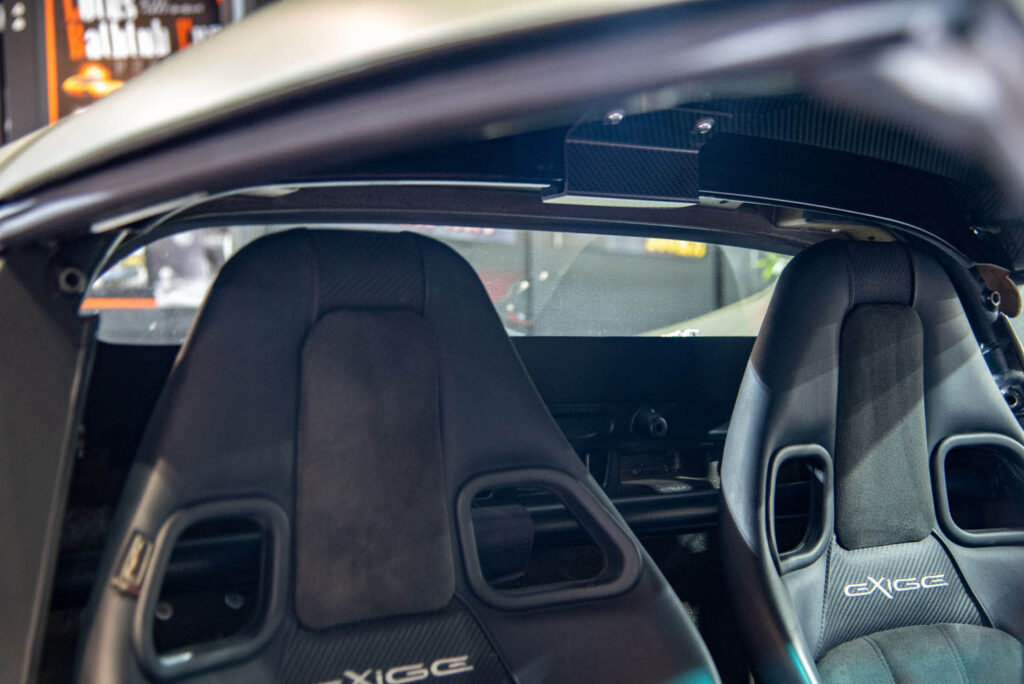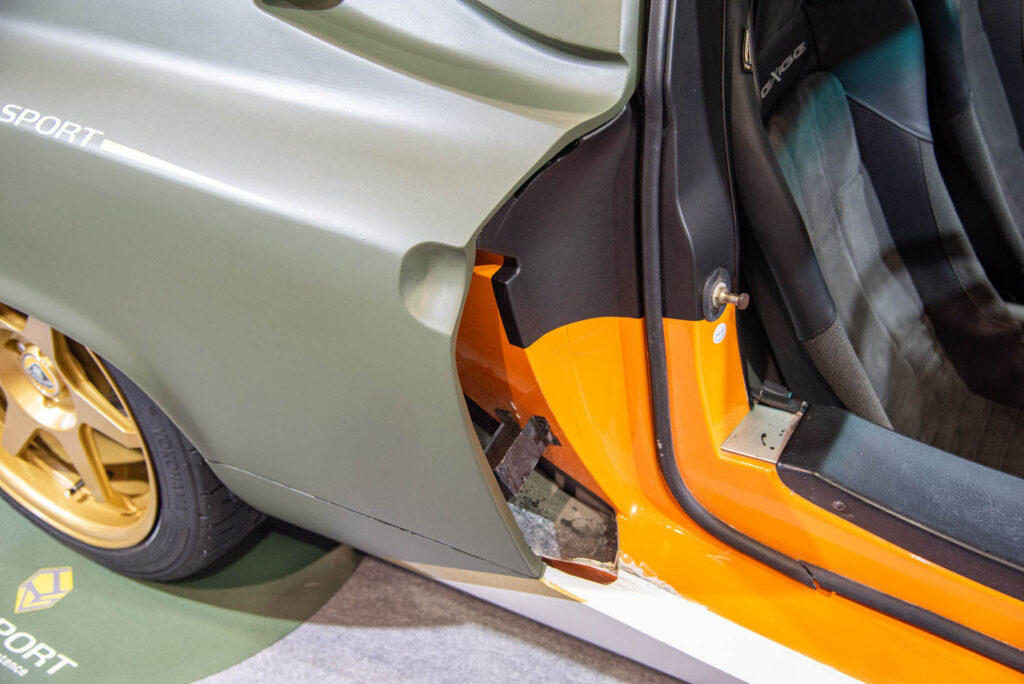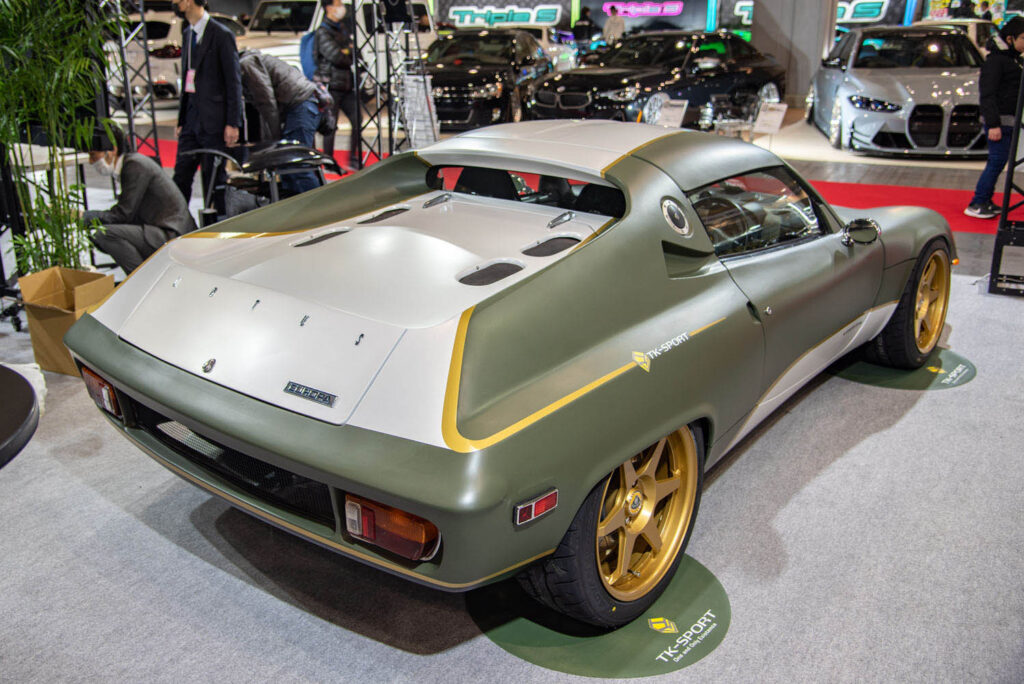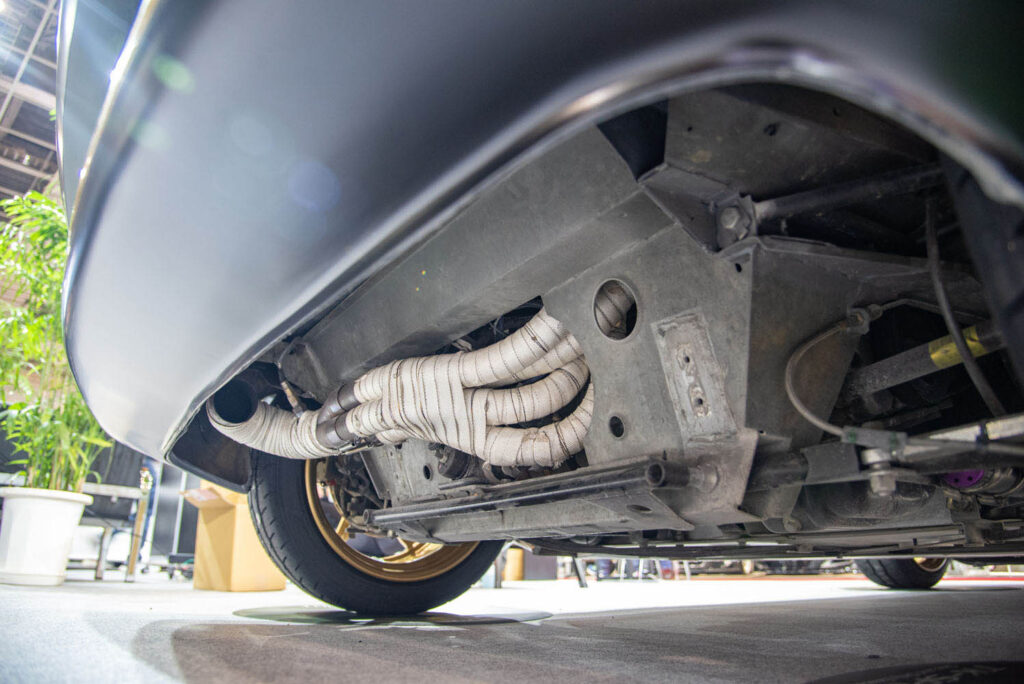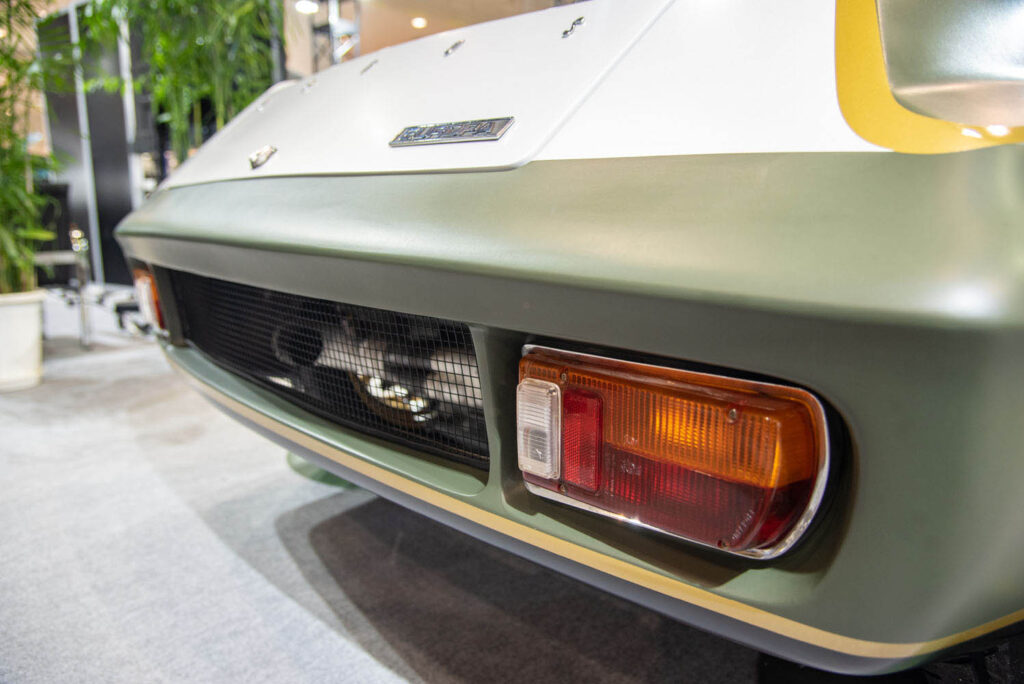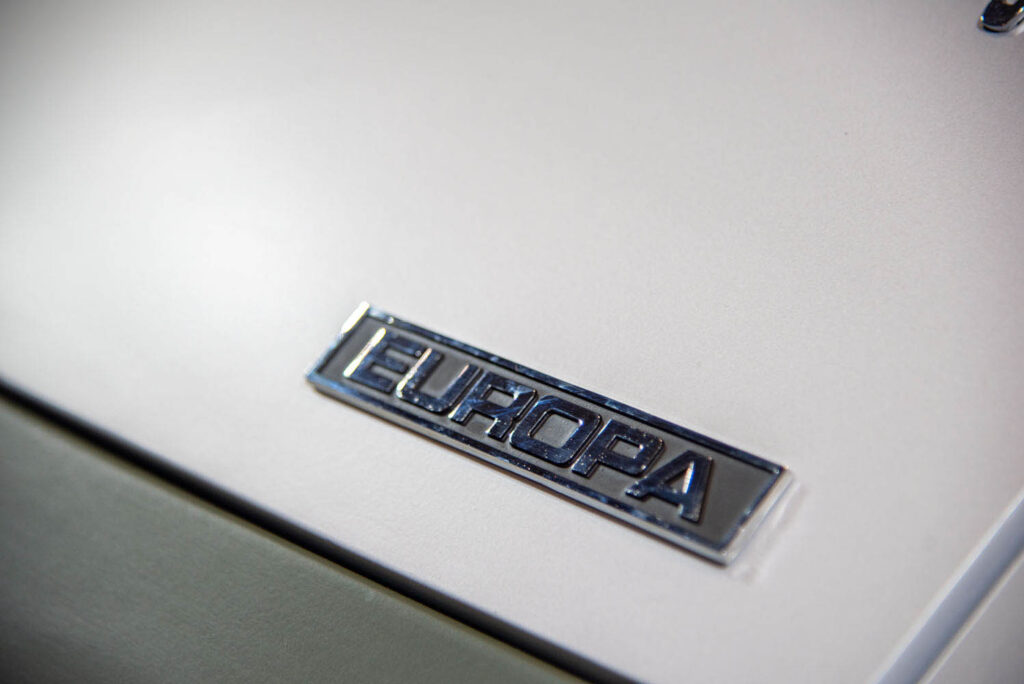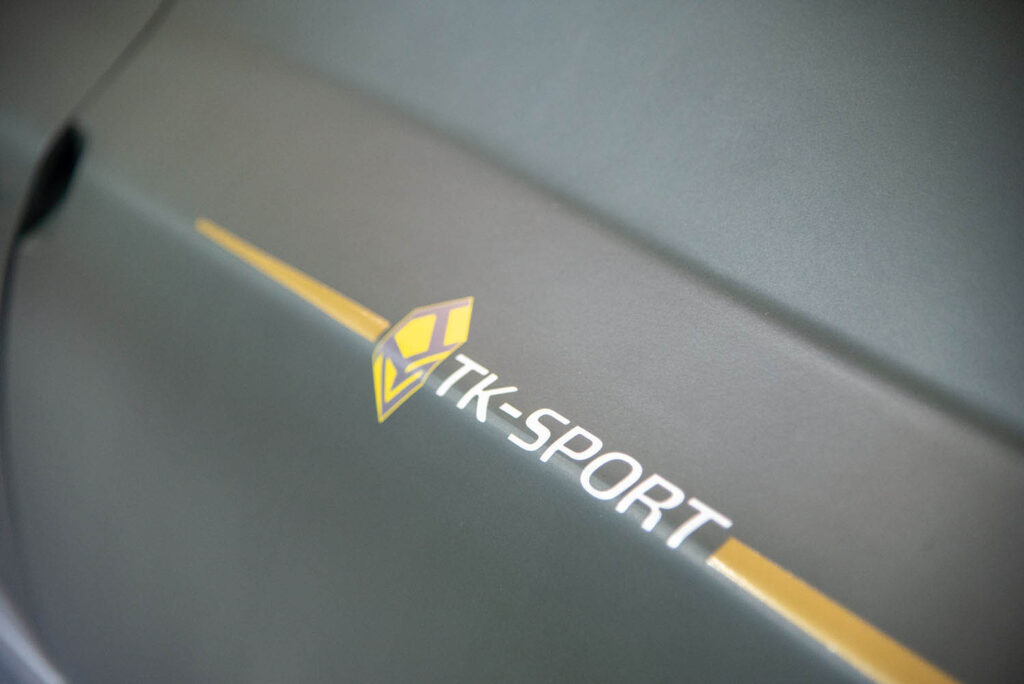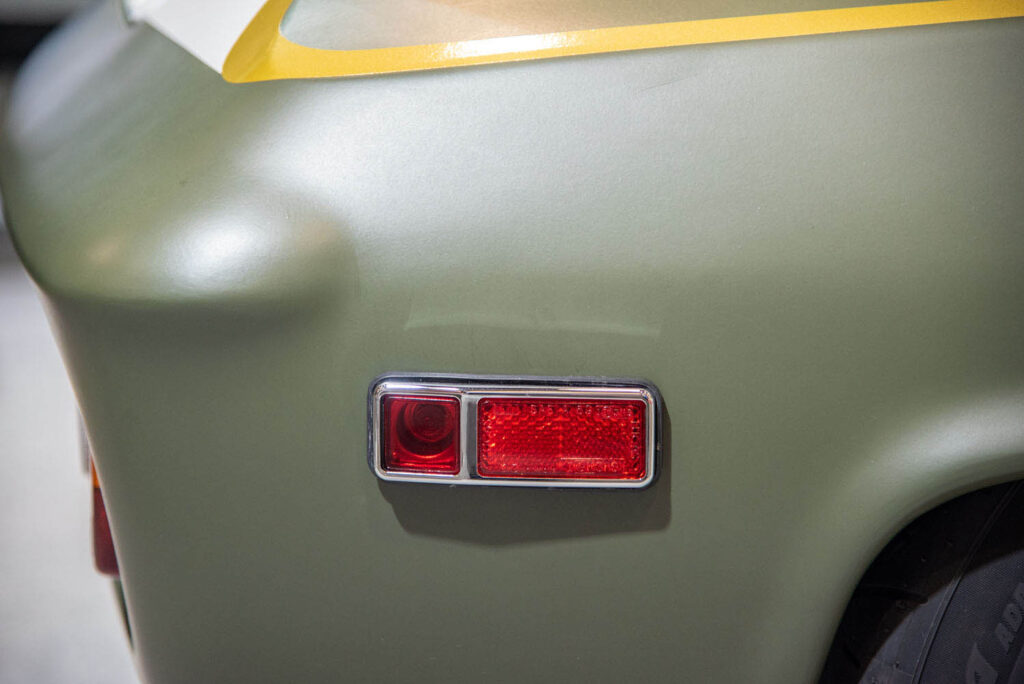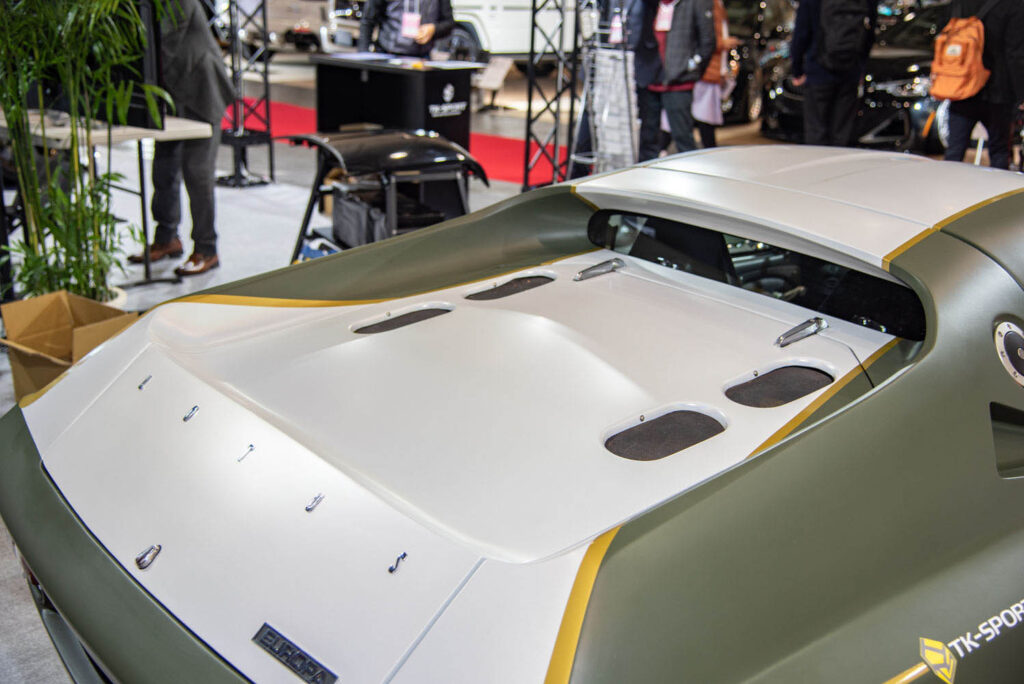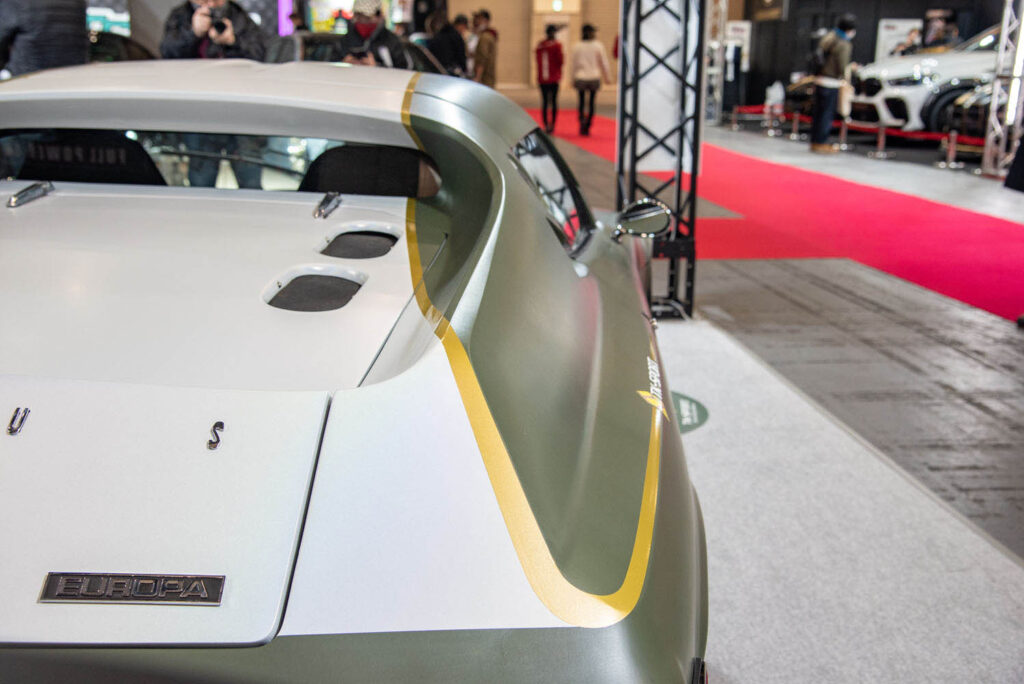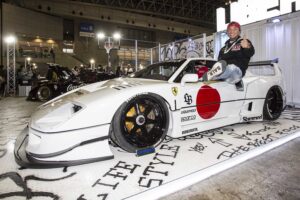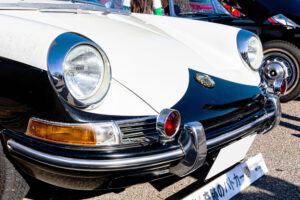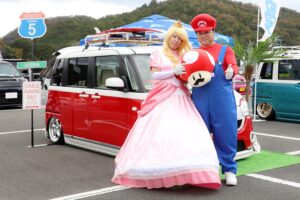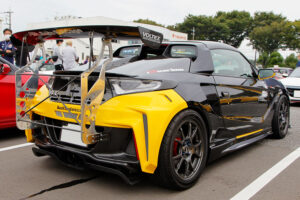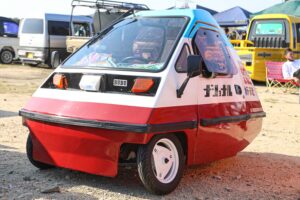Modern Lotus becomes “Europa”!
It looks like a chic, body-colored Lotus “Europa”, but is it a little different? This is the “Lotus Bathtub Europa” displayed at the TK-SPORTS (TKS) booth at the “Osaka Auto Messe 2023” held on February 10th. Surprisingly, the base car was the Lotus Exige 240 Cup.
A Lotus that anyone can drive with ease
Born in the 1960s, the Lotus Europa is a sports car that everyone would love to own. However, it is a bit difficult to drive for drivers who are not familiar with vintage cars.
Therefore, Takahiro Kubo, the representative of TKS, came up with the concept of “a safe and comfortable Lotus that even mature drivers can drive comfortably and without discomfort.
As you know, current Lotus cars, including the Exige, are built on a unique frame of aluminum structures bonded together (commonly known as the aluminum bathtub chassis). The European-style FRP body was combined with this frame.
Of course, the wheelbase and tread are different between the European and Exige models. It took about a year of repeated bodywork and fitting to reproduce this unique Europa.
Handmade bodywork by craftsmen
Although 3D scanners and 3D printers have been developed in recent years, Kubo of TKS said.
“The warmth of a craftsman’s hand work is still necessary to create the flavor of the era in which Europa was born, and that is also a courtesy to the original.”
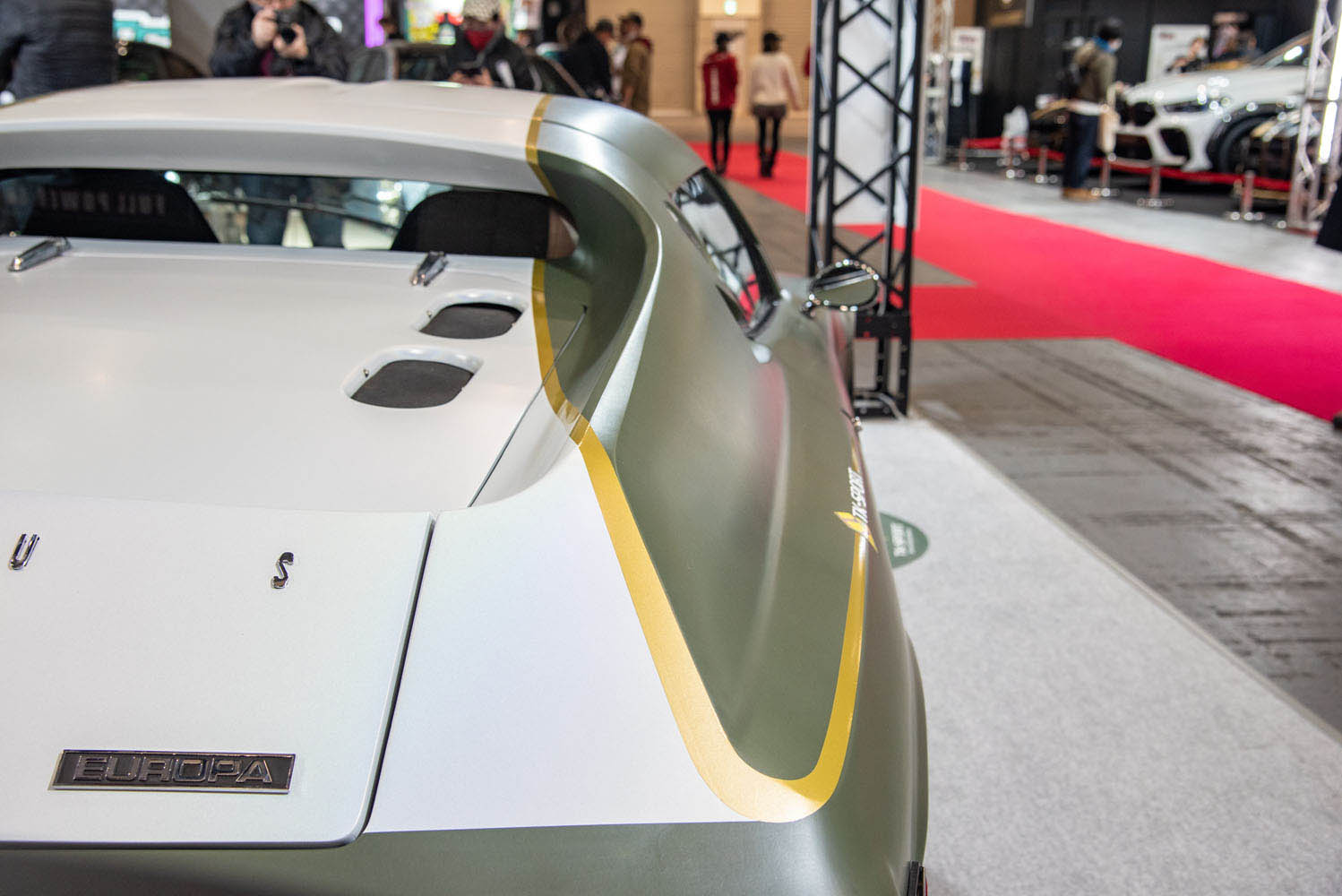
He chose to sculpt the body by hand, which was disadvantageous in terms of both time and cost. Incidentally, this bodywork was done by Akira Matsuura of Garage Ill, a well-known, long-established custom car builder.
Comfortable car life that even those unfamiliar with vintage cars can enjoy
While the interior and exterior are of the highest quality, attention has also been paid to the safety, comfort, and day-to-day maintenance required of a modern car. Daily usability has been improved over the Exige, for example by increasing the rear boot space.
With feedback from various people, the company is aiming for “mass production” in the future, with vehicle modification costs starting in the 3-million-yen range.





